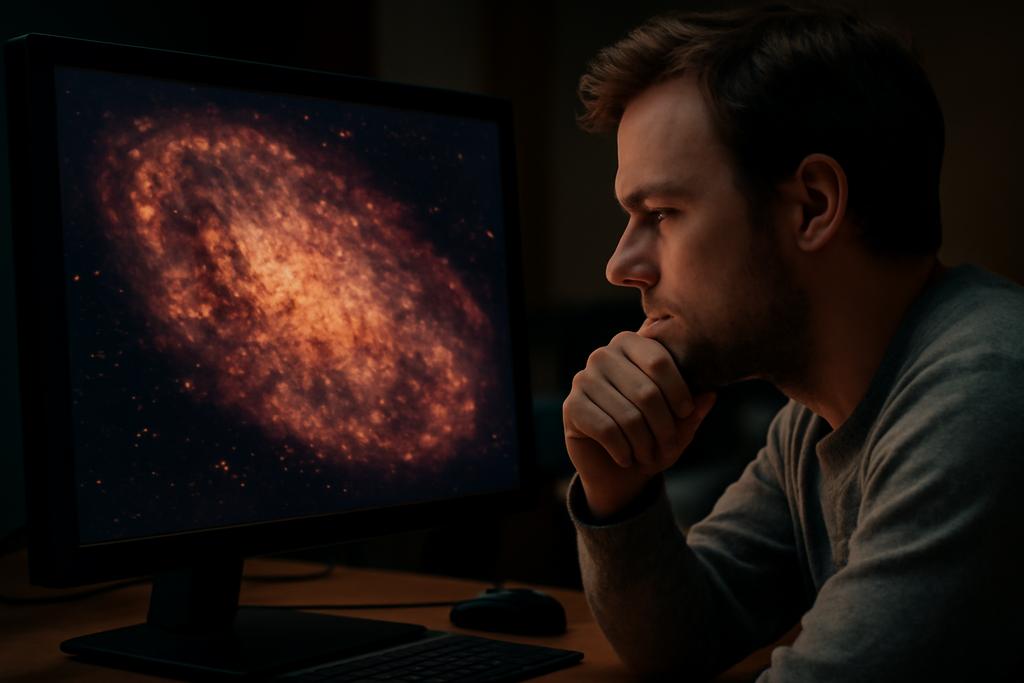The Big Bang theory, while remarkably successful, leaves some crucial questions unanswered. What was the universe’s composition in its earliest moments? What interactions governed its chaotic infancy? A new study from researchers at the University of Ferrara and the University of Padua, led by R. Impavidoa and N. Bartolo, offers a tantalizing glimpse into these mysteries, suggesting a powerful new way to hunt for hidden ‘fossils’ from inflation, the universe’s rapid expansion in its first moments.
Beyond Perturbation Theory: A New Lens on the Early Universe
The standard approach to understanding the early universe relies on perturbation theory—a mathematical tool that approximates complex interactions by treating them as small deviations from a simpler system. This works well in many cases, but when it comes to incredibly energetic events like inflation, the usual assumptions can break down. Some of the universe’s most dramatic events might have left behind imprints that are too vast, too powerful for this perturbative approach to capture. Think of it like trying to measure the Grand Canyon’s size with a ruler—it works for details, but misses the bigger picture.
Impavidoa and Bartolo’s work offers a path around this limitation, developing a ‘non-perturbative’ technique. This mathematical approach doesn’t rely on the assumptions of perturbation theory, allowing it to probe the effects of enormous fluctuations that would be obscured by conventional methods. Instead of using small perturbations to approximate the overall effect, it directly calculates the influence of these massive energy shifts.
Inflationary Fossils: Echoes of a Tumultuous Past
The researchers focused on ‘inflationary fossils,’ hypothetical fields from the universe’s inflationary epoch that left behind imprints on the cosmic microwave background (CMB) radiation—the faint afterglow of the Big Bang. The idea is that these ancient fields, like faint echoes, could influence the patterns of the CMB’s radiation, revealing subtle clues about their existence and properties.
Previous efforts to detect these fossils used perturbative methods, limiting their sensitivity to relatively small fluctuations. Impavidoa and Bartolo’s non-perturbative approach, however, is far more powerful. It’s like switching from a low-powered telescope to the Hubble—it significantly expands the range of signals we can detect.
Bridging the Gap: Connecting Two Approaches
The study’s most striking contribution is its ability to bridge the gap between two seemingly distinct methodologies: the Fossils’ approach (a perturbative technique) and the new non-perturbative method. They elegantly demonstrated that the non-perturbative technique, when simplified to first order, perfectly replicates the results of the perturbative Fossils’ approach. This is a significant validation, showing the consistency of their novel method.
This harmony isn’t trivial; it’s a testament to the deep mathematical coherence underlying the universe’s behavior. It shows that even radically different approaches—a refined approximation and a powerful direct calculation—yield identical results under specific conditions.
Implications and Future Directions
The implications of this research extend far beyond a mere mathematical exercise. By providing a robust way to identify inflationary fossils, it opens new avenues for probing the early universe’s conditions. This could unlock secrets about the universe’s initial composition, the nature of dark matter and dark energy, and the very fundamental forces that shaped its evolution.
The authors highlight that their non-perturbative approach is especially crucial for analyzing scenarios with exceptionally large fluctuations—events that are simply beyond the reach of traditional techniques. These scenarios might be responsible for the production of primordial black holes, a fascinating and still largely mysterious aspect of early-universe cosmology. The ability to probe these massive fluctuations is therefore immensely valuable.
Impavidoa and Bartolo’s study marks a significant advancement, not only in our understanding of the universe’s first moments but also in the development of new mathematical tools to decipher its secrets. The ongoing work will likely refine our understanding of these early inflationary events, with the hope of finding those faint echoes that could revolutionize our view of the cosmos. Their finding, a testament to the elegance and depth of physics, promises to rewrite a chapter of our understanding of the universe’s origins.










